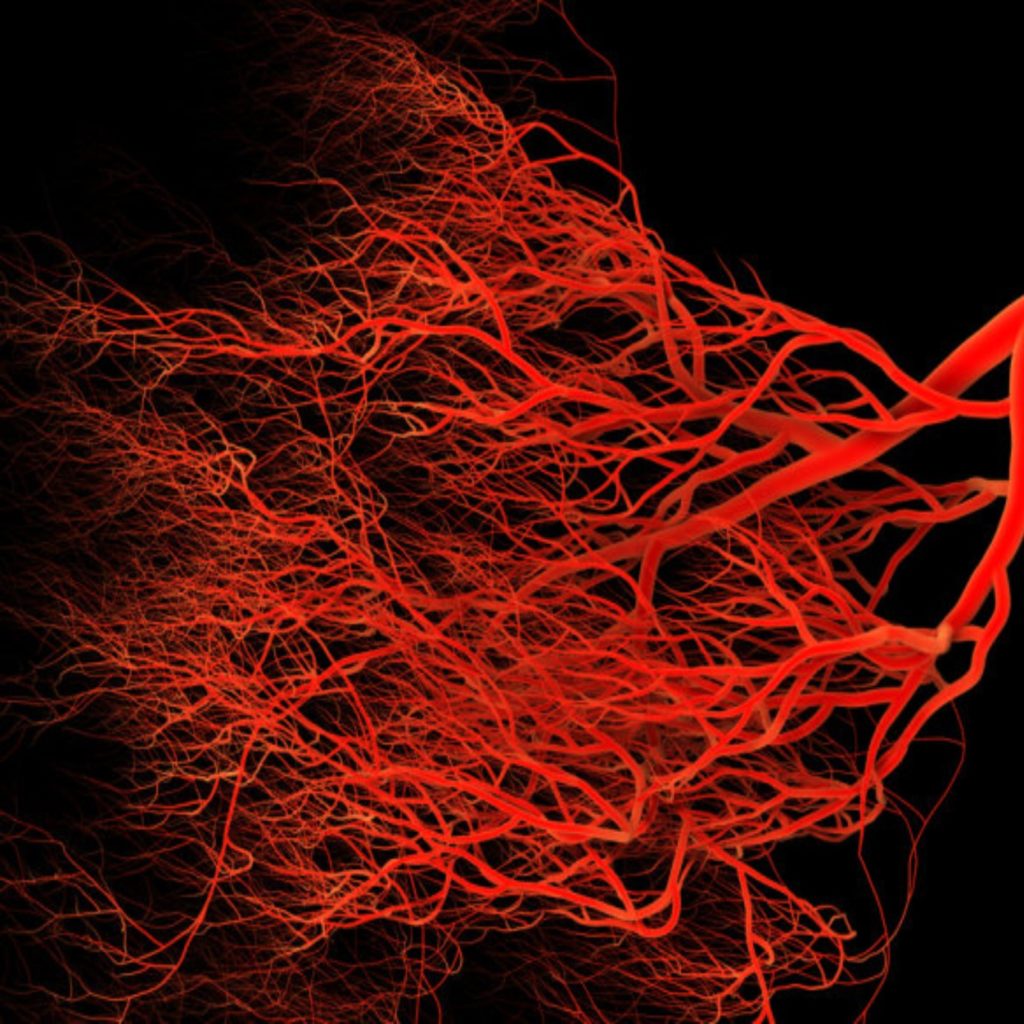Capillaries, the smallest vessels of your vascular system, traverse your muscle fibers, leading to places deep inside your muscles.
Think of capillaries like highways. With many highways in a city, you don’t need to drive far on local roads to get to your destination. You get off the highway at one of its exits, and you’re close to where you need to go.
Oxygen molecules in the blood travel through the capillaries, waiting to take an exit. The more capillaries perfusing your muscle fibers, the shorter the distance oxygen must travel (by diffusion) from the capillaries to get to their destination — the mitochondria, where aerobic metabolism takes place.
An elegant adaptation to aerobic exercise is a growth of blood vessels, called capillarization or, more generally in referring to blood vessel growth, angiogenesis. Aerobic exercise is one of the few physiological circumstances that cause angiogenesis.
Angiogenesis is a complex process requiring microscopic construction. It occurs from shear stress to existing capillaries from the constant “push” of blood through them while running, mechanical forces applied to the capillaries, and increased metabolism.
Single capillaries split into two and new vessels sprout from existing capillaries. This splitting and sprouting increases blood vessel surface area around your muscle fibers to enhance oxygen and carbon dioxide gas exchange.
To become a faster distance runner, as much of your muscle surface area as possible should be covered by capillaries. That’s one reason why having small leg muscles is beneficial for runners — it increases capillary coverage.
Now, get closer, because this is what you really came for: How do you split and sprout your capillaries and blanket your muscles with capillaries?
Run a lot. Do hard, aerobic workouts (e.g., long tempo runs) that push a lot of blood through your capillaries to cause shear stress on the capillary walls. And choose parents with small muscles on their legs that you can inherit.
